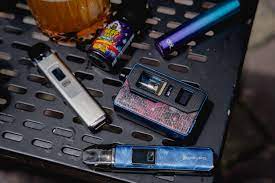Vaping has emerged as one of the most prevalent forms of nicotine use among teenagers worldwide, and peer pressure plays a central role in influencing adolescent vaping rates. While curiosity, flavors, and marketing strategies are important factors, the social dynamics of adolescence—especially the need to fit in—often determine whether a teen tries vaping in the first place.
The Influence of Peer Pressure
Peer pressure can be both direct and indirect. Direct peer pressure occurs when friends or classmates actively encourage or dare someone to vape. This might involve offering a vape pen during a social gathering or making comments that suggest vaping is “cool” or a sign of maturity. Indirect peer pressure happens more subtly, when teens notice many of their peers vaping and feel that participating is necessary to be accepted or to avoid social isolation.
Why Adolescents Are Vulnerable
Adolescence is a time of identity Hayati Pro Ultra Plus Pods formation and heightened sensitivity to social approval. The teenage brain is still developing, particularly in areas related to decision-making and impulse control. This developmental stage makes it more likely for teens to prioritize short-term social acceptance over long-term health considerations. Being part of a group that vapes can quickly normalize the behavior, even for those who initially have no interest in nicotine products.
The Role of Social Media
Peer influence today extends beyond the classroom or playground. Social media platforms amplify vaping’s visibility through videos, photos, and “vape tricks” that make the activity look entertaining and harmless. When teens see their friends—or influencers their friends follow—posting vaping content, it reinforces the idea that vaping is a common and socially rewarding activity. This online exposure can be a powerful motivator for experimentation.
Impact on Vaping Rates
Studies consistently show a strong link between peer vaping and personal use. Adolescents who have friends or siblings who vape are far more likely to try it themselves. In some surveys, the presence of vaping within a friend group was one of the strongest predictors of whether a teen would start using e-cigarettes. The more normalized vaping becomes in a teen’s immediate social environment, the higher the likelihood that they will adopt the behavior.
Breaking the Cycle
Addressing peer pressure’s influence requires both education and empowerment. School programs that teach refusal skills—such as how to say no confidently in social situations—can help teens resist direct offers to vape. Additionally, creating supportive peer networks that value health over risky behaviors can reduce the social rewards associated with vaping.
Conclusion
Peer pressure is a powerful force in shaping adolescent vaping rates, often making the difference between curiosity and actual use. Because teens are highly influenced by their social circles, prevention efforts must focus not only on educating individuals about health risks but also on changing the group norms that make vaping appear desirable. Tackling peer pressure head-on may be one of the most effective strategies in reducing youth vaping rates over time.

